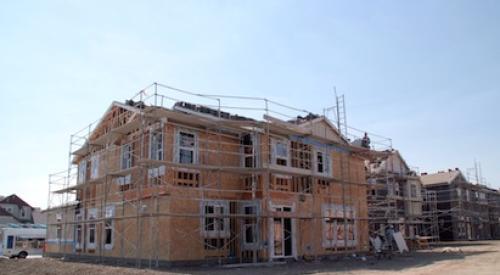In my April column, "Your Choice in Cost Control," I challenged the traditional builder mentality of slashing overhead first whenever margins tighten. I asked where you would go if you need a lot of money — 7-Eleven or the Bank of America — and made parallels to home building: slashing overhead or finding creative ways to cover costs. The answer was obvious given that the combination of house cost and variable land development cost amounts to 12–15 times the overhead line for the average builder.
 |
I'll refer to a quote from Willie Sutton, often recognized as the world's greatest bank robber. As an old man, finishing up his days in federal prison, a reporter asked why he robbed banks. "'Cause that's where the money is!" he said.
That is why you should be going after house cost and variable land development cost instead of overhead, and many of you agree. Since that column I have given several presentations on the subject, and through e-mails, phone calls and conversations, a pattern has emerged. About half of those I hear from are CEO/COO types who want to know how to get through to their field operations and focus them on finding "the real money." The other half comprises members from these very same field operations, asking for help in getting the CEOs and COOs to understand where that same money is!
Once again we confront a problem that people seem to grasp conceptually yet have a hard time solving. Hammering the overhead line shows immediate results and impresses the boss or the board — and shows you are a serious operator. Deciding to maintain the overhead or even spend more money to go after the big prize ... that's just too much risk for most of us to bear.
Yet, some of you have convinced me you are ready to give it shot and have asked for my list of favorite targets, so I will give it up.
So here are "Sedam's Strategies — Where the Money is," where I know that you can find $5 bucks for every $1 you cut in overhead.
- Product Strategy. Resolve to stop letting your tail wag the dog. Unless you are one of the top five builders in most markets (and many of those build way more product lines than they need), you do not have to build everything for everybody or be driven by every piece of land that walks in the door. Consider three factors: What are you technically great at (good doesn't count)? What do you make the most money building? What do you enjoy building? If you have an intersection of those three, then build it and become recognized as absolutely the best at that product in your market. If you don't have an intersection, make some choices and create one. Not having a clear product strategy is costing you.
- Land Selection. Buy only parcels of land that enable you to build what you do best. You will be sorely tempted, but hold the line and, as Nancy Reagan said, "Just say no!" For every one deal that might have made you real money, you'll avoid two white elephants.
- Advertising. At least 50 percent is total waste — probably more like 80 percent. The answer is to do something different, something intelligent, something strategic that drives people to your projects in a different way than broadcasting to millions in hopes that a few hundred show up.
- Startup process. More money is being bled out on the ground here than any other single place in home building. Fixing it requires a focused process, a committed team, painstaking hard work and unfailing discipline — and few builders have the attention span and guts to see it through. But it can be done, and seven-figure money is waiting.
- Trade selection. How many of you really fight for the best suppliers and trades as measured on a total cost and total value basis? There is a lot of good intention out there, but when I ask builders to prove it to me, few can. Remember, its not just the best trades, it's the best crews from the best trades and that can make all the difference in the world in schedule, quality, cost and profit.
- Plans & Specs. I see it everywhere I go: out of date plans, red lines on top of redlines, the same plan and material errors showing up at site after site. Whatever you think you save by not having the internal staff or external resources to keep your plans and specs up-to-date is a nasty and expensive trick on yourself.
- Options & Selections. Here are your choices: you can either (a) have an extremely simple product and selections or (b) offer a lot of options and variation with truly bulletproof systems or (c) lose your shorts. The problem is, most builders who think they have bulletproof systems don't, and when measured on a total cost basis, much of the profit is illusory.
- Schedule. If you are taking anything more that 60 days to build a starter home, 80 days to build a move-up and 120 days to build a semi-custom, you are ripping up thousand-dollar bills. The best builders beat the snot out of even those numbers. Again, you have to think total cost and the impact on your suppliers and trades as well as your own systems and people.
- Turnover. Ask your controller or CFO, "What's the cost of losing one good person?" That's the total cost of what you invested in him or her, the value of what they are leaving with and what they might do for a competitor and what it will cost to recruit, train and get a new person up to speed and pay for their mistakes the first year. Seriously. Demand an answer. Once you understand this your entire world will change.
- Prevention mentality. This requires a culture of continual improvement. I have asked group after group, how many people — given the time, tools and authority — could eliminate just $1,000 of wasted expense from the company, and nearly 100 percent raise their hands. When I up it to $5,000 I get 50 percent. At $10,000, I still get more than 20 percent. OK, so you eliminate those who are deluding themselves and those who are duplicating the same dollars.
Still don't think there is six-figure money out there? Bet on it.I said from this list I can guarantee $5 for each $1 you cut in overhead, but $10 is very doable, and I have seen much more. And here's the no-added-cost bonus — you will also save yourself the considerable damage you were about to do by cutting salary increases, bonuses, training, perks, special events, charitable contributions and the big and little things that make your company a special place to work.
Is there a catch? Absolutely. Although cutting overhead will produce immediate results on paper, it typically takes 90–180 days to see significant dollars in the 10 areas cited above, depending on your culture and how much preparation you have to do. Many companies, however, have found big money in 30–60 days. No matter what your horizon is, do the math, and you will find the return rate to be well worth a little patience and some hard work.
| Author Information |
| Scott Sedam is President of TrueNorth Development, a nationwide consulting and training firm focused on quality, process improvement and organizational development. He can be reached at scott@truen.com. |












